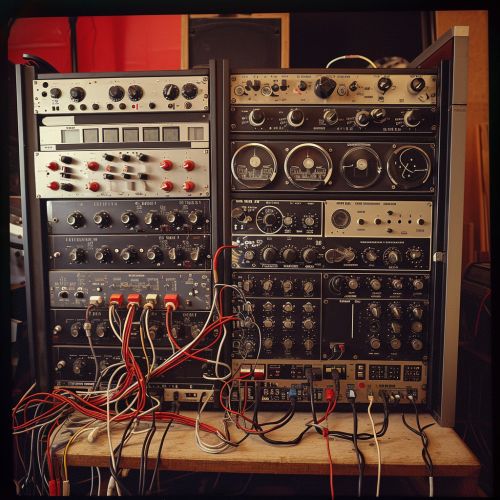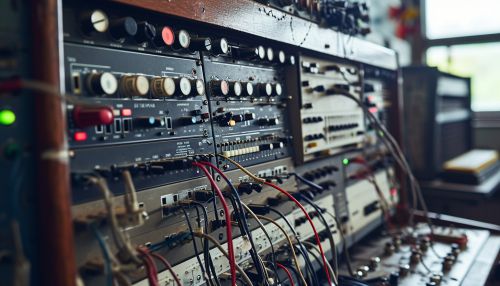Analog computer
Introduction
An analog computer is a form of computer that utilizes the continuously changeable aspects of physical phenomena such as electrical, mechanical, or hydraulic quantities to model the problem being solved. In contrast to their digital counterparts, analog computers are not discrete devices. They do not manipulate and interpret binary data. Instead, they measure and use real-world, continuous data and perform computations using that data.
History
The concept of analog computing dates back to ancient times. The earliest known analog computing device is the Antikythera mechanism, a Greek astronomical predictor, dating back to the second century BC. The evolution of analog computing is a testament to human ingenuity and the desire to solve complex problems using available resources.
In the 19th century, the development of mechanical analog computers reached a significant milestone with the creation of the differential analyzer. This mechanical device, developed by James Thomson, was capable of solving differential equations, a task that was previously thought to be impossible for a machine.
The 20th century saw the development of electronic analog computers. These devices used electronic circuits and components to perform computations. The most notable of these was the Electronic Delay Storage Automatic Calculator (EDSAC), which was the first practical electronic digital computer.


Design and Operation
Analog computers operate by manipulating continuous data. In an analog computer, a problem is represented by a physical phenomenon that changes continuously. This could be the flow of current in an electrical circuit, the rotation of a gear, or the movement of a hydraulic fluid.
The key components of an analog computer are the operational amplifiers. These devices are used to perform mathematical operations such as addition, subtraction, multiplication, and integration. The results of these operations are then used to solve the problem at hand.
Analog computers are designed to solve specific types of problems. For example, an analog computer designed to solve differential equations would have a different configuration than one designed to solve optimization problems.
Applications
Analog computers have been used in a variety of applications. In the early days of computing, they were used in scientific research, military applications, and industrial control systems.
One of the most notable uses of analog computers was in the Apollo moon landing mission. The Apollo Guidance Computer, an early digital computer, was used in conjunction with an analog computer to perform the complex calculations required for the mission.
In recent years, there has been a resurgence in interest in analog computing due to its potential for energy efficiency and computational speed. Researchers are exploring the use of analog computing in fields such as artificial intelligence and machine learning.
Advantages and Disadvantages
Analog computers have several advantages over digital computers. They can solve complex problems that are difficult or impossible to solve using digital computers. They are also faster and more energy-efficient than digital computers.
However, analog computers also have several disadvantages. They are less accurate than digital computers due to the continuous nature of their data. They are also more prone to errors due to noise and other disturbances. Furthermore, they are less versatile than digital computers, as they are designed to solve specific types of problems.
Future of Analog Computing
The future of analog computing is promising. With the advent of quantum computing, there is a renewed interest in analog computing. Researchers are exploring the use of analog computing in quantum systems, which could lead to significant advancements in computing power and efficiency.
In addition, the development of neuromorphic computing, which mimics the structure and function of the human brain, is driving interest in analog computing. Neuromorphic computing uses analog circuits to mimic the behavior of neurons and synapses, potentially leading to more efficient and powerful computing systems.
